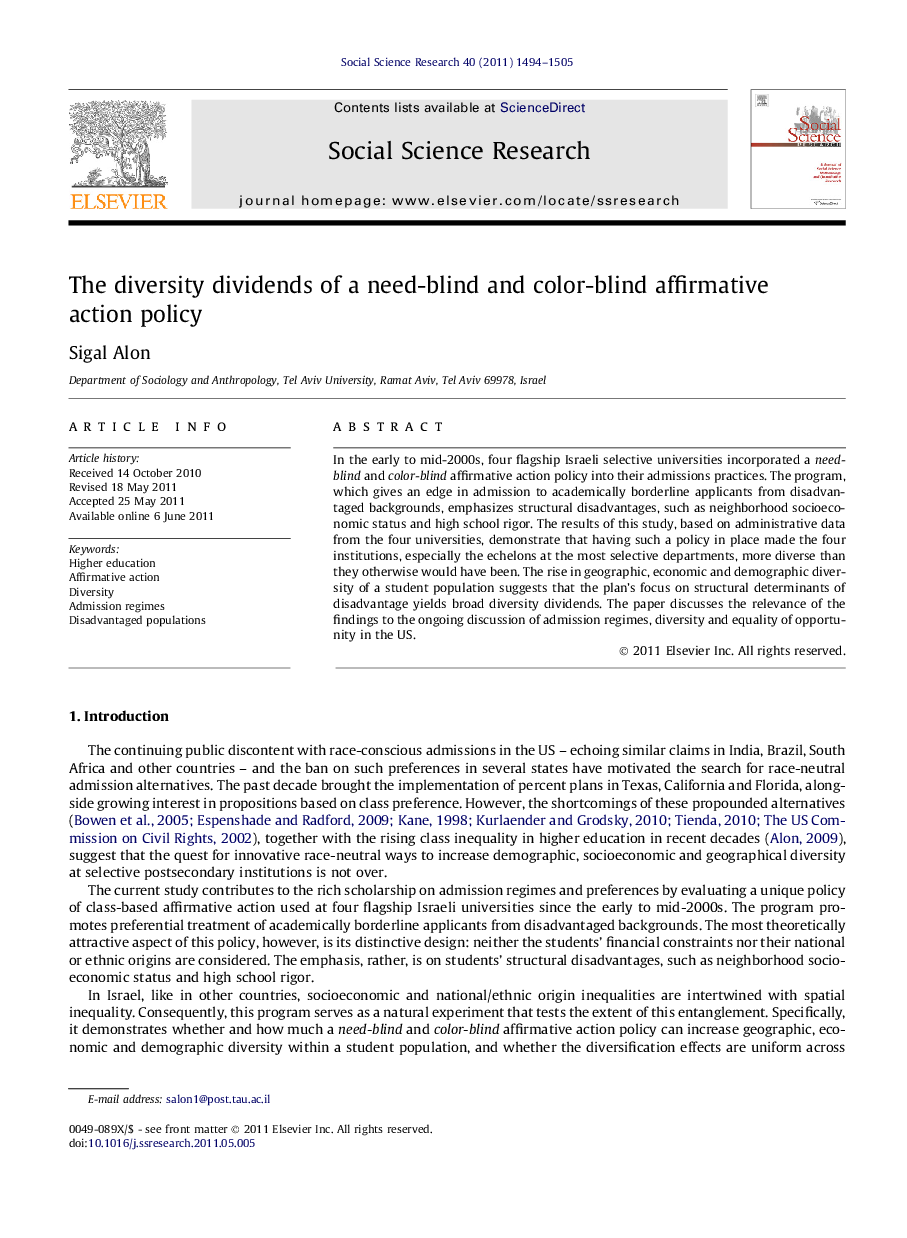| Article ID | Journal | Published Year | Pages | File Type |
|---|---|---|---|---|
| 955812 | Social Science Research | 2011 | 12 Pages |
In the early to mid-2000s, four flagship Israeli selective universities incorporated a need-blind and color-blind affirmative action policy into their admissions practices. The program, which gives an edge in admission to academically borderline applicants from disadvantaged backgrounds, emphasizes structural disadvantages, such as neighborhood socioeconomic status and high school rigor. The results of this study, based on administrative data from the four universities, demonstrate that having such a policy in place made the four institutions, especially the echelons at the most selective departments, more diverse than they otherwise would have been. The rise in geographic, economic and demographic diversity of a student population suggests that the plan’s focus on structural determinants of disadvantage yields broad diversity dividends. The paper discusses the relevance of the findings to the ongoing discussion of admission regimes, diversity and equality of opportunity in the US.
► Israeli universities adopted a need- and color-blind affirmative action policy. ► The eligibility criterion emphasizes structural disadvantages. ► The policy boosts geographic, economic and demographic diversity. ► The diversity dividends are the largest in the most selective departments. ► The relevance of this policy to US admissions is discussed.
